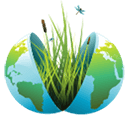
Humbug Marsh
About
GENERAL INFORMATION
Criteria:
- Currently a Ramsar Site
- Protects biological diverse wetland flora, fauna and/or their habitat
- Supports significant numbers of wetland-dependent fauna, such as water birds or fish
- Rare or unique wetland type within its own biogeographical region.
The Detroit River, which connects Lake Huron and Lake Erie, has a long history of industrial development along its shoreline and is a major commercial navigational system. As a result, coastal marshes along this riverine system have been greatly degraded (Manny et al. 1988). For this reason, in Michigan, the Great Lakes marsh natural community is classified as S3 (Vulnerable), due to its relatively few occurrences, recent and widespread declines, or other factors making it vulnerable (Albert 2001, MNFI 2007).
Humbug Marsh, a management unit of the Detroit River International Wildlife Refuge and a designated RAMSAR site, is a unique and significant site worthy of the “Wetlands of Distinction” designation. This site provides habitat for a number of species, is considered essential for the preservation of migrating raptor species and other migrating waterfowl and passerines, and serves as a spawning and nursery habitat for many fish species (USFWS 2014).
Citations:
Albert, D. A. (2001). Natural community abstract for Great Lakes marsh [Updated June 2010]. [Online.] Available at https://mnfi.anr.msu.edu/abstracts/ecology/Great_lakes_marsh.pdf.
Manny, B., T. Edsall, and E. Jaworski (1988). The Detroit River, Michigan: An Ecological Profile [Biological Report 85(7.17). [Online.] Available at http://www.nwrc.usgs.gov/techrpt/85-7-17.pdf.
MNFI (2007). Michigan Natural Features Inventory - Rare Species Explorer (Web Application). [Online.] Available at https://mnfi.anr.msu.edu/explorer/search.cfm.
USFWS (2014). Humbug Marsh. Detroit River International Wildlfe Refuge - Michigan. [Online.] Available at https://www.fws.gov/refuge/detroit_river/refuge_units/humbug.html.
Exemplary Ecosystem Services:
- Maintains ecological connectivity/cohesion
- Aesthetic/cultural heritage value/ provisioning
- Recreation (birdwatching, ecotourism)
- Education
CONSERVATION STATUS AND THREATS
Public Access: Yes
Conservation status: RAMSAR Designation
Adjacent Land Use: Urban
Approximate natural buffer width:
- > 100 ft
Other: Managed by USFWS
ECOLOGY
Approximate size: 166 ha (410 acres)
General wetland characterization:
- Coastal Shallow Fresh Marsh
- Coastal Deep Fresh Marsh
Adjacent Water Bod(ies):
- Stream
Name of body of water: Detroit River (HUC 04090004)
Surficial Geology:
Lacustrine clay and silt
If Adjacent to Stream, stream order: River
Soils:
Blount loam, Erie-Huron Lake Plain, 0 to 2 percent slopes (BfA); Cut and fill land (Cu); Glynwood loam, 2 to 6 percent slopes (GnB); Marsh (Mb); Metamora sandy loam, 0 to 3 percent slopes (MeA); Nappanee silt loam, 0 to 4 percent slopes (NaB); Owosso-Morley complex, 2 to 6 percent slopes (OwB); Water (W); Ziegenfuss clay, 0 to 1 percent slopes (ZfsabA).
FLORA AND FAUNA
Dominant flora: Communities in Humbug Marsh include: early successional shrub thickets; wet-mesic flatwoods, Great Lakes marsh (Slaughter and Penskar 2015).
Unique flora: Carex trichocarpa (hairy-fruited sedge), documented in wet meadows at the margins of emergent marsh along the Detroit River.
Dominant fauna: Many migratory birds, at least 158 recorded bird species (eBird Checklist); seven species of reptiles and amphibians. Source: https://www.fws.gov/refuge/detroit_river/refuge_units/humbug_marsh_species_lists.html
Rare fauna: eastern fox snake (ST); russet-tipped clubtail (SSC); peregrine falcon (SE); red-shouldered hawk, common loon, bald eagle, black-crowned night heron, osprey, caspian tern, common tern (ST). Source: https://www.fws.gov/refuge/detroit_river/refuge_units/humbug_marsh_species_lists.html
ADDITIONAL INFORMATION
An Ecological Interpretation of the Humbug Marsh Unit
Audubon - Important Bird Areas
Heritage Preserved Along the Detroit River
Detroit Heritage River Water Trail
CONTACT INFORMATION
Applicant First Name: Guadalupe
Applicant Last Name: Cummins
Applicant E-mail Address: [email protected]
Images

